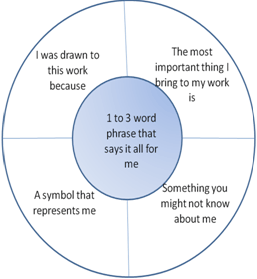That Business Analyst ‘Secret Sauce’
 The practice of business analysis is only 30 years old but already we have mature methodologies, best practices, certification, tools, terminology, competencies. Our craft is in excellent shape!
The practice of business analysis is only 30 years old but already we have mature methodologies, best practices, certification, tools, terminology, competencies. Our craft is in excellent shape!
But then there’s the age-old BA question, the one that always surfaces regardless of the context: what have we overlooked?
Today’s answer is the individual attributes of each and every BA. Just as no two baseball pitchers (starters, closers, southpaws) are identical, neither are any two BAs.
This article talks about why it’s worth delving into the preferences and dispositions of individual BAs; how this contributes to excellence in the work and the product (both when assigning the work, and when ‘framing’ an assignment for a specific individual); the boost to employee engagement and retention that comes from paying close attention to individual BAs, and finally, how to implement these discoveries and benefits in your BA team … or for yourself in your solo BA practice.
Let’s look first at a typical team with the names changed to protect the innocent as well as the guilty (the latter would be the author). We have a team lead, Ms. Matchmaker (the author again) and four intermediate BAs, Mr. Melody, Ms. Connector, Mr. Clock and Ms. Fixit.
Over time, as suggested by the names, we’ve discovered a few things about each other.
Ms Matchmaker likes to know what’s going on everywhere and who’s involved in it, so she can connect the dots on short notice. Mr. Melody steps in whenever we run into a ragged process or a situation where there is no process at all. Mr. Clock always has his eye on the finish line and the calendar. Ms. Connector is the first to notice and nudge if anything we’re doing is similar (or contradictory) to something going on elsewhere in the organization. Ms. Fixit positively glows whenever she encounters a good mess, one that needs to be cleaned up, structured and prevented from happening again. Ever!
Later we’ll talk about how we discovered these attributes in our team members. But first…
Why Should We Care?
When new work comes towards our team, we try (when we have the luxury) to assign it to the team member whose disposition is the best fit.
Example: we were recently asked to take on the support and maintenance of a new application from …ummm…an overly agile development project. The application was not well documented, there was no support structure in place for incident, problem and change management, the technical environments were less than robust and there was no governance. This work went to Ms. Fixit, who gathered the team and worked calmly and efficiently through all the issues until the application was safely installed in our
portfolio of well managed services. Mr. Melody provided QA throughout the transition process, and as a result of his work we ended up with a template and a checklist for a standardized transition process going forward. Bonus!
Another example: a few months before she was due to retire, one of our business owners let us know that she had a secret stash of ad hoc reports that only she understood but that executive relied on, and she hoped that we would be able to redevelop these reports, document the meta data and get them implemented in a production environment before she was gone. The reports had been built using SAS (not our standard tool) and no one on our team had SAS experience. Our reports analyst was new and not yet familiar with our old clunky unsupported suite of reporting tools. But, our reports analyst happened to be Mr. Clock, and with both feet on the gas pedal he managed to get those reports implemented three days before our user’s retirement party. The bonus in this venture was that Mr. Clock, backed up by Ms. Matchmaker who had been paying attention to trends in the world of reporting, was able to advocate for and implement a new reporting environment after this project was completed.
Another Thing
Often, we don’t have the luxury of assigning the work to the person for whom it’s the best fit. Availability is the deciding factor. Then what?
Then it’s even more worthwhile knowing our BA’s dispositions and tendencies. The truth is most projects possess most attributes – there is always an element of time, process and integration. We’ve discovered that if we highlight the attribute that particularly appeals to a team member, the person will be much more productively engaged than if we describe the initiative in terms that do not ‘grab’. (To the same degree that Mr. Clock is attracted by a deadline, some of our other team members are repelled).
‘Framing’ is Important
For instance, last year Ms. Connector was assigned the tedious job of collecting our division’s quarterly performance measures. But because the work was ‘framed’ in terms of decision support for executive, Ms. Connector dug in enthusiastically and was eventually acknowledged for having gone ‘above and beyond.’ By the time she was done she had ensured that all our performance measures integrated with measures from other divisions across the organization. Furthermore, like Ms. Fixit, she was supported by Mr. Melody in the development of a repeatable process that has made subsequent rounds of performance measure collection much less mundane.
Anything Else?
It’s fitting that it’s Mr. Melody who makes this case for a team where the members know their own and each others’ strengths so well.
“A good team”, he says, “is like a symphony orchestra. You need to have a variety of instruments – basses and tubas as well as pianos and violins. You need to appreciate them all and give them their right roles. If you do that, the orchestra goes from good to great. Our team is great and that’s a big part of the reason why.”
It’s worth noting that in a recent re-organization where some team members might have been able to latch onto interesting opportunities in other areas, the members of this team all expressed a preference for staying where they are and staying together.
Uncovering the Strengths and Preferences on Your team. Or in Yourself
The Personal Crest ExerciseMaterials needed. Magazines to be cut up (lots of variety), scissors, glue, marker pens, crayons, a large heavy sheet of blank paper for each participant. Develop the crest. Participants are given 20 – 30 minutes to work quietly on their own crest using whatever supplies and techniques they wish (good to provide some examples from previous sessions that are not too intimidating or ‘artistic’)
Share the crests: participants are given 5 minutes each to speak about whatever elements of their crest they wish. Afterwards, crests are posted in a communal area. |
The team we’ve been talking about had the good fortune to come together a few years ago when recruiting was competitive and employee retention was a major focus in the organization. As a result, the team had no trouble getting management approval for some overhead ‘bonding’ time in early days.
The intimacy of a team charter day that included a few facilitated exercises like the Personal Crest Exercise (inset below) went a long way towards revealing the team members to themselves and to each other.
A discovery tool that has been used effectively in many organizations is the The Clifton Strengthsfinder 2.0. This inexpensive standardized test (a copy of the book and a single access to an online test costs about $30) is based on the notion that each of us is wise to identify and apply our top five or 10 strengths because these strengths will form the basis of our best ongoing contribution. This methodology also says – in contrast to development models of the past – that we should avoid devoting ‘more time to fixing our shortcomings than to developing our strengths’. Amen to that.
Meyers Briggs testing is another popular and readily available tool for discovering individual attributes.
Whatever techniques we use, there’s a pay off to knowing ourselves and our team mates well: the reward is a happy team using their best individual skills, supporting and appreciating each other and delivering really good work.
Don’t forget to leave your comments below
Marsha Williams is a Senior Business Analyst and Team Lead in the Shared Services division of the Public Service of British Columbia. Marsha’s three passions in her professional life are: knowing the people and their strengths and assisting them to use those strengths for their own sake and for the sake of the organization; always digging deeper to determine what work really needs to be done and what creative approach will best enable good results; writing whatever needs to be written so we know where we came from, where we are and where we’re going. Marsha can be reached at [email protected]

